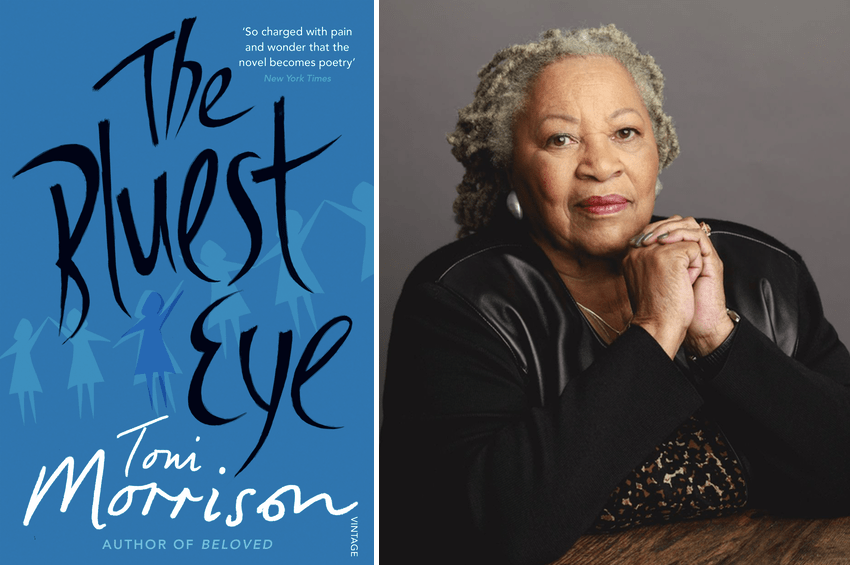The Bluest Eye by Toni Morrison is a novel that talks about the life of a young African-American girl, Pecola, who grows up during the years after the Great depression. The novel is mainly about the experiences of Pecola, who undergoes challenges as she is regarded as ugly due to her dark skin. Pecola develops the desire for blue eyes, which she equates to whiteness and beauty. She also develops an inferiority complex due to her regard as ugly by society. Toni Morrison tells the story from the point of view of two main narrators, a young and old Claudia MacTeer, the daughter to Pecola’s foster parents, and an omniscient third-person narrator. Toni Morrison makes meaning of the novel by using different elements of literary arts work including themes, characters, motifs, and symbols.
The theme is effectively utilized in the Bluest eye to communicate the meaning of the novel to the audience. The major themes in the novel include beauty and ugliness and race, and racism. Beauty and ugliness as a theme in the novel bring the desire for the blue eyes by Pecola. From the novel, whiteness is linked to the paragon of beauty. The blacks are socialized to accepting that the concept of beauty only relates to whiteness, making Pecola accept abuses as she believes she deserves them since she is ugly. Claudia describes the standard of beauty by mentioning, “Adults, older girls, shops, magazines, newspapers, window signs—all the world had agreed that a blue-eyed, yellow-haired, pink-skinned doll was what every girl child treasured. Race and racism are depicted in the novel by the use of people of color” (Morrison, 2007, p. 20). From the novel, race involves the color of skin or physical features and relates to the socioeconomic status of individuals, educational background, and place of origin (Morrison, 2007, pp. 168,177). The novel links the whites to cleanliness, virtue, and value, while the blacks are considered dirty, immoral, and worthless. The author uses the two outlined themes to make meaning of the novel as they highly relate to Pecola and the narrator’s experiences.
Characters of the novel are arranged to help the author communicate the meaning of the novel easily. The narrator, Claudia MacTeer, is one of the characters, and she narrates from her point of view. Toni Morrison uses Claudia to introduce all the characters in the novel by detailing the relationship between them. Through Claudia, the audience learns about her all family from her parents and sister Frieda MacTeer (Morrison, 2007, p. 9). The protagonist of the novel is also introduced from her relationship with Claudia, as she is the foster child of the MacTeer’s (Morrison, 2007, p. 16). Characters are used in the novel effectively to build on the concept and information that the author wants to communicate. The introduction of each character in the novel follows how they build on the arguments and the themes, which makes the novel a complete whole. Therefore, the novel uses characters as an element of making meaning.
The novel engages a significant use of motifs that help create meaning and lead to the themes’ creation and support. The major motifs engaged in the novel are eyes and vision and dirtiness and cleanliness. The author engages the use of the outlined motifs in a major part of the novel. The novel outlines the obsession of Pecola to have blue eyes, as she links such to beauty, which she believes will change how people see her, and in turn, how she sees the world; “Each night, without fail, she prayed for blue eyes. Fervently, for a year she had prayed” (Morrison, 2007, p. 46). The novel also continually references other characters’ eyes as Mr. Yacobowski, the blankness in his eyes, and the inability to see black girls. The motifs of eye and vision help communicate the theme of beauty and ugliness, a major part of the novel. The novel brings out dirtiness and cleanliness by showing how the blacks who have internalized the white middle-class values have an obsession with cleanliness. Characters such as Geraldine and Mrs. Breedlove have an excessive concern with cleanliness, while Claudia enjoys her dirt (Morrison, 2007, p. 22). The motif of cleanliness and dirtiness in the novel helps the author communicate how the blacks are engrossed with the white features to the extent that they want to be assimilated to most of their ways.
Lastly, the novel Bluest Eye uses symbols as a method of passing information to the readers. The author engages the use of the symbol as a means of creating meaning. The major symbol in the novel is the blue eye. The symbol is used to communicate what Pecola considers beauty and happiness involved with the white middle-class individuals. The bluest eye could also be utilized to mean sadness of Pecola due to her life outcomes. The novel could have also engaged the singular eye’s use in the bluest eye as a pun intended I, the singular form of an individual, to express the singular form of sadness in one of the characters.
The Bluest Eye by Toni Morrison manages to effectively communicate the life of Pecola and all those surrounding her and how society impacts her happiness and well-being. The author manages to use different literary elements to communicate with the readers and deliver the point as expected. The novel utilizes elements such as themes, characters, motifs, and symbols effectively. The elements are also interlinked to help in driving the same meaning across the novel. Through the incorporation of the elements, the novel manages to communicate to the readers effectively.







